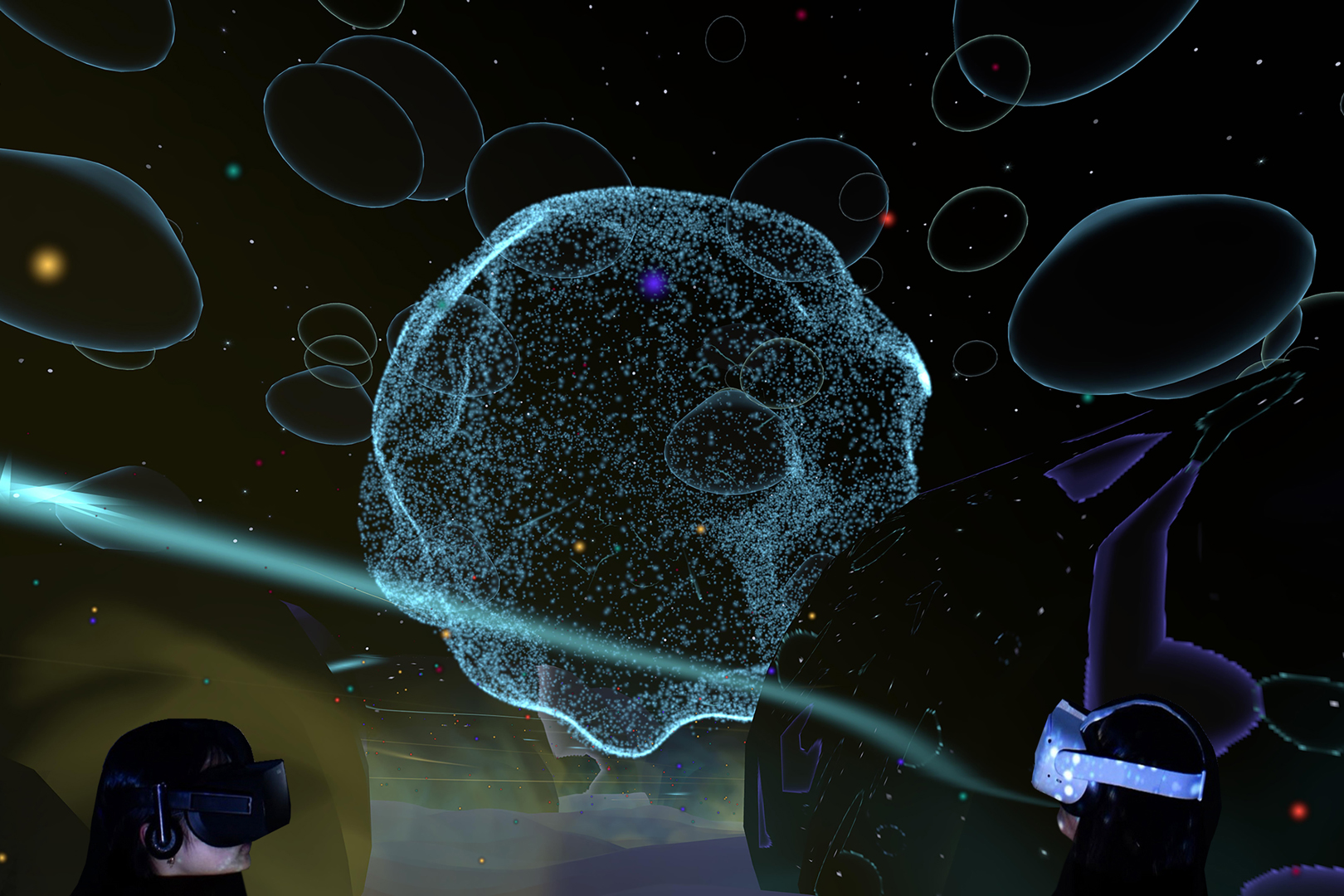“SinkInSync: A Brainwave Synchronization Experience in VR Towards Enhancing Social Connectedness: A Brainwave Synchronization Experience in VR Towards Enhancing Social Connectedness” by Wang and Feng
Conference:
Experience Type(s):
Entry Number: 13
Title:
- SinkInSync: A Brainwave Synchronization Experience in VR Towards Enhancing Social Connectedness: A Brainwave Synchronization Experience in VR Towards Enhancing Social Connectedness
Presenter(s):
Description:
SinkInSync presents the design and prototype of a VR-based cross-person EEG neurofeedback platform. This generative VR platform uses one user’s brainwave data to procedurally render 3D scenes and passively displays visual cues that are synchronized with the real-time brainwave frequency to another user. With the platform, we aim to explore the potential of VR as an avenue for augmenting cognitive and emotional social connectedness in remote interactions via externally-induced brainwave synchronization between pairs of individuals.
References:
- Rollin McCraty. 2017. New Frontiers in Heart Rate Variability and Social Coherence Research: Techniques, Technologies, and Implications for Improving Group Dynamics and Outcomes. In Frontiers in Public Health. Vol. 5.
- Judith Amores, Anna Fuste, Robert Richer and Pattie Maes. 2019. Deep reality. In ACM SIGGRAPH 2019 Virtual, Augmented, and Mixed Reality.
- Cristiane Gebara, Tito Barros-Neto, Leticia Gertsenchtein, and Francisco Lotufo-Neto. 2015. Virtual reality exposure using three-dimensional images for the treatment of social phobia. In Revista Brasileira de Psiquiatria. Vol. 38, No. 1, 24–29.
- Konstantina Kilteni, Raphaela Groten, and Mel Slater. 2012. The Sense of Embodiment in Virtual Reality. In Presence: Teleoperators and Virtual Environments. Vol. 21, No. 4, 373–387.
- Asma Ghandeharioun and Rosalind Picard. 2017. BrightBeat. In Proceedings of the 2017 CHI Conference Extended Abstracts on Human Factors in Computing Systems – CHI EA ’17.
- Udo Will and Eric Berg. 2007. Brain wave synchronization and entrainment to periodic acoustic stimuli. In Neuroscience Letters. Vol. 424, No. 1, 55–60.





